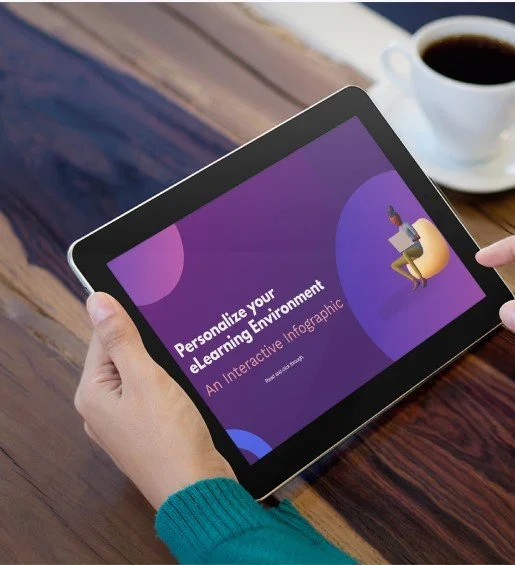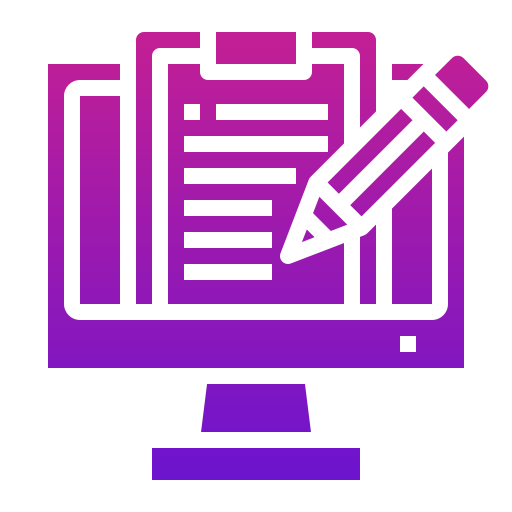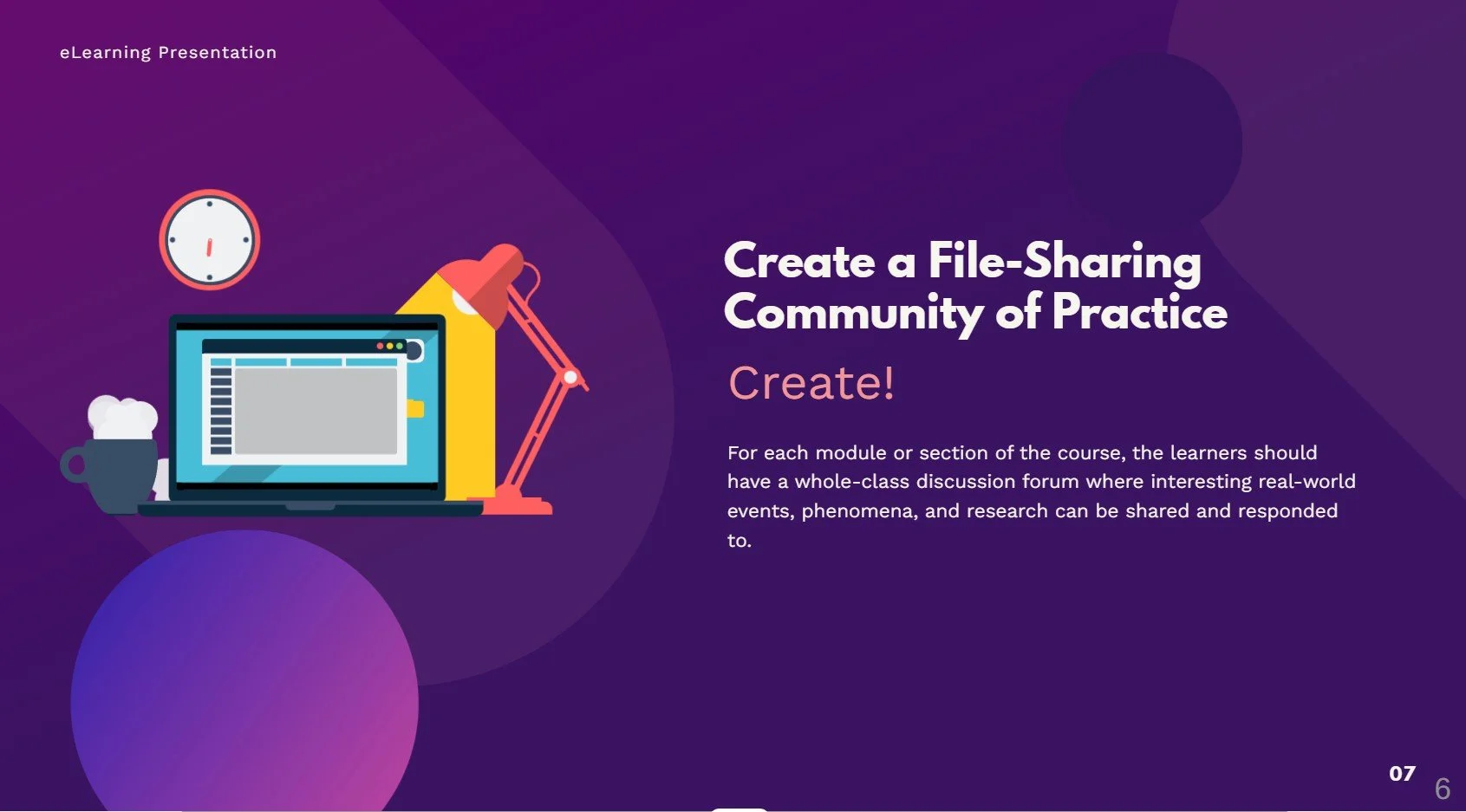Personalize your eLearning Environment
Can you create a personalized and community-focused eLearning environment?
Overview
Audience:
Professors, instructors, and educators of eLearning courses/modules.
Responsibilities:
· Instructional Design
· eLearning Development
· Visual Design
· P.I.E. Model Expert
Tools Used:
· Visme
· Google Forms
· Multimodal Learning
The Problem
In preparation for publishing his book, a professor wanted to create an engaging infographic that described a portion of his new P.I.E. Model framework. The infographic needed to teach other professors and instructors how to implement the framework's P. (personalize) portion in an informative and interactive way.
The Solution
I proposed examining the framework and becoming a P.I.E. Model expert to be able to create an innovative and engaging experience that informs the user on how to enhance their eLearning environment.
I also proposed using the ADDIE model to analyze how much the prospective audience knew about the new framework, design an effective and engaging experience, develop the content via mood boards and storyboards, implement the experience via volunteers, and evaluate the results via surveys and questionnaires.
The Process
I began the process by studying the P.I.E. Model, reading the necessary content, and having many discussions with the author of the P.I.E. Model framework book. After that, I established clear learning goals and objectives using Bloom’s Taxonomy verbs. I determined to have the learners reach the necessary learning objectives, the content would need to be interactive and experienced at the learner’s own pace. After becoming a subject matter expert on the material and clarifying the learning objectives, I then interviewed a few professors to gauge how much they knew about the P.I.E. Model framework. Due to my results, I gathered that the concept was new to the learners and that it would be paramount for the design to act as an introduction to the content and as an informative experience.
I designed an infographic experience that would be interactive and in presentation form. In this regard, I would give the learners the ability to interact and engage with the design at their own pace without receiving too much information at one time. I created design mood boards and storyboards to ensure the learning objectives and the visual components were being met. After creating a prototype, I had a few volunteers engage with the content. After making some much-needed adjustments, I had the same volunteers interact with the experience again and surveyed them afterward. Once the results were taken into consideration, I designed and published the final product.
Mood Board
Visual Storyboard
Evaluating
To design the final product I analyzed the surveys and questionnaires and created an experience that was in direct response to the feedback. I read over the learning objectives and the professors’ responses to the questionnaires and reconfigured the experience to meet the needs of the learners even more. I incorporated full visual designs, animations, and simple-to-read informative text. In doing so, I utilized research-based techniques proven to improve adult/workplace learning.
Survey/Questionnaire
Full Development
Results and Takeaways
This is excellent work! I'm glad you were able to use the PIE concepts effectively and bring so much detail to your experience. This creative use of instructional design is a practical example for PIE Model implementation.
Your interactive infographic has helped me develop a community-focused course although we are fully online. Thank you!
I really liked your ideas for the file-sharing CoP, action plan creation, and peer feedback rubric - all excellent concepts for student engagement. Great work!!














